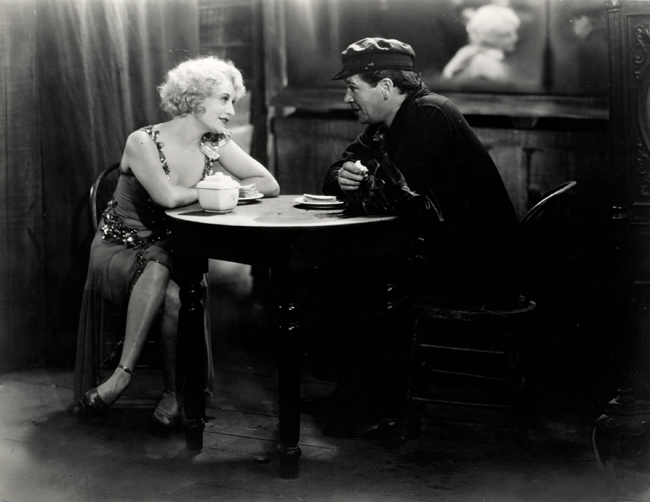Josef von Sternberg was born in Austria but emigrated to the United States with his parents when he was fourteen, so that professionally he came up through the American film industry, first in New York and then Hollywood, though he would later make movies in Germany as well. He seems to be well-regarded by experts, though none of his catalog of movies stood out to me as a familiar classic title. An American Tragedy, based on the then six-year old Dreiser novel that I happened to read, and thought highly of, over the summer, is a somewhat forgotten adaptation--it does not appear to have ever been been released even on VHS--in the shadow of the later A Place in the Sun, starring Elizabeth Taylor and Montgomery Clift. Someone has posted it, apparently in its entirety, on Youtube. As is to be expected with an 874 page book condensed to a 90 minute movie, the plot of the movie is considerably streamlined from that of the source material, but as an admirer of the book I found it a good treatment, probably better in that regard than A Place in the Sun, though I also like that version as a movie qua movie. Von Sternberg's version has the advantage of being nearly contemporary with the book; this is especially helpful where the actors are concerned, as they all conform more to my idea of what the characters were like both as far as looks and general temperament went. Also the 1931 version placed its emphasis more on the relationship between Clyde and the factory girl Roberta, who was played beautifully (and far more sympathetically than Shelley Winters's depiction 20 years later) by an actress named Sylvia Sidney, whom I had never heard of before, but who had a very long career, earning an academy award nomination in 1973 and appearing in movies as late as 1996's Mars Attacks!, while the later one was much more interested in that between Clyde and the wealthy Sondra Finchley character, which was the role played by Elizabeth Taylor. The Sondra role in the 1931 movie was played by the way by Frances Dee, whom I had never seen before either but whom I remember having been praised by James Agee for 'having a face' and 'never being around nearly enough', and indeed her part in this was surprisingly small. As is often the case in old mid-list type Hollywood movies of this type, the general impression one gets is that there were an absurdly large number of beautiful women under contract in Hollywood in the 30s. In this movie even among the extras and non-speaking, whether among the factory workers or Sondra's chi-chi friends, there are just rooms full of gorgeous girls.
Sylvia Sidney (with the much-maligned Joseph Holmes, as Clyde)
The dialogue in the courtroom scenes in the book were I thought unusually well-written, and the writers of the screenplay had the good sense to transfer several of the key exchanges pretty much as they were into the movie, which maintains its interest and intensity, despite the circumstance that the verdict in the case is never for a second in doubt, more than is common in courtroom dramas.
...and Frances Dee
Whenever titles are employed to indicate a passage of time or a change of locale, they appear against a backdrop of a shimmering lake with a frame of leaves, which I thought was a really fine aesthetic touch, and a nod to the serious quality of the book.
Highly recommended.
The Docks of New York (1928)
Taking us back to the silent era, this movie feels like being dropped into a Eugene O'Neill play (The Hairy Ape, especially), with its desperate, brutish machine-age laborers, dive bar never more than an inadvertent jostle or stare held a second too long from bursting into violence, and prostitutes and other damaged women who never had a chance. I didn't like this one quite as much--even with O'Neill, I have to admit I prefer his plays which feature somewhat more evolved and articulate characters--though the (presumably) restored print from the Criterion Collection I saw was striking. But I don't have much more than that to say about it.




No comments:
Post a Comment